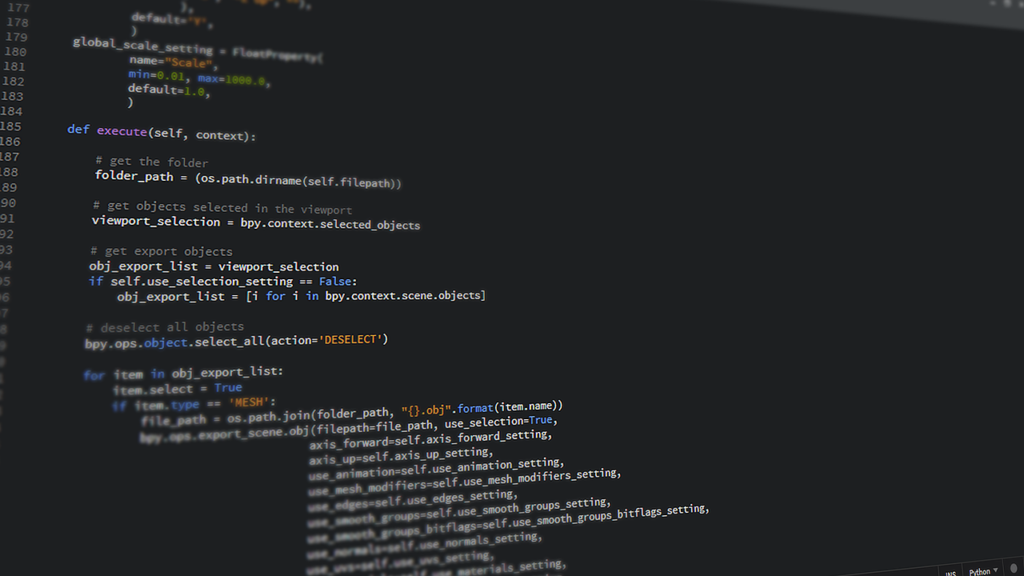Unlocking the Power of Python Programming


Python programming is becoming increasingly popular as a programming language of choice. Python is a powerful, general-purpose programming language that can be used to create a wide range of applications, from web development to artificial intelligence. Whether you’re a novice programmer or a seasoned veteran, Python has something for everyone.
In this blog, we’ll explore the world of Python programming and unravel its many benefits. We’ll look at Python programming statistics and fundamentals, explore Python programming libraries and tips, and examine Python programming tutorials and applications. We’ll also cover courses for mastering Python programming and services for Python programming.
What is Python programming?
Python is an interpreted, high-level, general-purpose programming language. It is an excellent language for beginners to learn and use, as it is relatively easy to read and understand. Python is also an ideal language for experienced developers, as it is highly versatile and can be used to create a wide range of applications.
Python is an object-oriented, open-source language, meaning it is freely available to anyone who wishes to use it. It is also a cross-platform language, meaning it can be used on multiple operating systems, such as Windows, Mac OS, and Linux.
Python is also an interpreted language, meaning that code written in Python can be run directly without having to be compiled. This makes it easier to develop applications quickly and efficiently.
Benefits of Python programming
Python is a powerful, versatile, and easy-to-learn language that is becoming increasingly popular with developers. Here are some of the benefits of Python programming:
- Python is a powerful language that can be used to create a wide range of applications.
- Python is an open-source language, meaning it is freely available to anyone who wishes to use it.
- Python is a cross-platform language, meaning it can be used on multiple operating systems.
- Python is an interpreted language, meaning that code written in Python can be run directly without having to be compiled.
- Python is an object-oriented language, meaning it is well-suited for developing large-scale applications.
- Python is easy to read and understand, making it an ideal language for beginners.
- Python is highly versatile, meaning it can be used to create applications for a wide range of industries.
Python programming statistics
Python programming is becoming increasingly popular with developers. According to the 2019 Stack Overflow survey, Python is the most popular programming language, with nearly 30% of developers using it. It is also the most loved programming language, with over 80% of developers expressing interest in continuing to use it.
Python is also the most popular language for Machine Learning, with over 50% of Machine Learning developers using it. This is due to its powerful data analysis and visualization capabilities, as well as its extensive array of libraries for Machine Learning.
Python programming fundamentals
Python programming is relatively easy to learn and use. To get started with Python programming, you will need to install a Python interpreter and a text editor. There are several options available, such as the popular Anaconda distribution, which comes with a range of tools and packages.
Once you have installed Python, you will need to learn the basics of the language. This includes variables, data types, functions, classes, and control structures. You will also need to learn how to manipulate data, such as sorting, filtering, and aggregating.
Python programming libraries
Python has a wide range of libraries that can be used to create a variety of applications. These libraries are a collection of pre-written code that can be used to quickly and easily develop applications.
The most popular Python libraries include NumPy, SciPy, and Pandas, which are used for data analysis and manipulation. Other popular libraries include Matplotlib, which is used for data visualization, and Scikit-Learn, which is used for Machine Learning.
Python programming tips
As with any language, there are certain tips and tricks that can be used to make the development process smoother. Here are some tips for Python programming:
- Use an IDE such as PyCharm or Visual Studio Code to make development easier.
- Use version control to keep track of changes to your code.
- Use PEP 8 to ensure your code is following the best coding practices.
- Take advantage of the Python community by asking questions and getting advice.
- Utilize libraries to speed up development time.
- Make sure to use proper indentation and whitespace to make your code more readable.
- Take advantage of the debugging tools available in Python.
Python programming tutorials
If you’re looking to learn Python programming, there are a variety of tutorials available. From books to online courses, there is something for everyone.
If you’re a beginner, there are a number of free tutorials available. These tutorials are a great way to get started with Python programming and to learn the basics of the language.
If you’re looking for more advanced tutorials, there are also a variety of paid courses available. These courses are more comprehensive and will teach you the fundamentals of Python programming in depth.
Python programming applications and examples
Python programming is a versatile language and can be used to create a wide range of applications. Here are some examples of applications that can be created with Python programming:
- Web applications: Python can be used to create dynamic, feature-rich web applications.
- Desktop applications: Python can be used to create native desktop applications.
- Mobile applications: Python can be used to create mobile applications for both Android and iOS.
- Machine Learning: Python can be used for Machine Learning tasks, such as natural language processing and sentiment analysis.
- Data analysis: Python can be used for data analysis tasks, such as data wrangling, cleaning, and visualization.
- Automation: Python can be used to automate tasks, such as web scraping and web crawling.
Courses for mastering Python programming
If you’re looking to master Python programming, there are a variety of courses available. From beginner-level courses to more advanced courses, there is something for everyone.
Courses typically cover topics such as the basics of Python programming, object-oriented programming, data analysis, web development, and Machine Learning. The courses usually include a variety of hands-on projects to help you gain practical experience.
Python programming services
If you’re looking for help with Python programming, there are a variety of services available. From freelance developers to software development companies, there is something for everyone.
Freelance developers can provide a variety of services, such as creating custom applications, developing web applications, and providing Machine Learning services. Software development companies can provide more comprehensive services, such as developing large-scale applications, providing support and maintenance, and creating custom software.
Conclusion
Python programming is becoming increasingly popular as a programming language of choice. It is a powerful, general-purpose language that can be used to create a wide range of applications, from web development to artificial intelligence.
In this blog, we’ve explored the world of Python programming and unraveled its many benefits. We’ve looked at Python programming statistics and fundamentals, explored Python programming libraries and tips, and examined Python programming tutorials and applications. We’ve also covered courses for mastering Python programming and services for Python programming.
Whether you’re a novice programmer or a seasoned veteran, Python has something for everyone. With its powerful capabilities and easy-to-learn syntax, Python programming is an excellent language to learn and use.